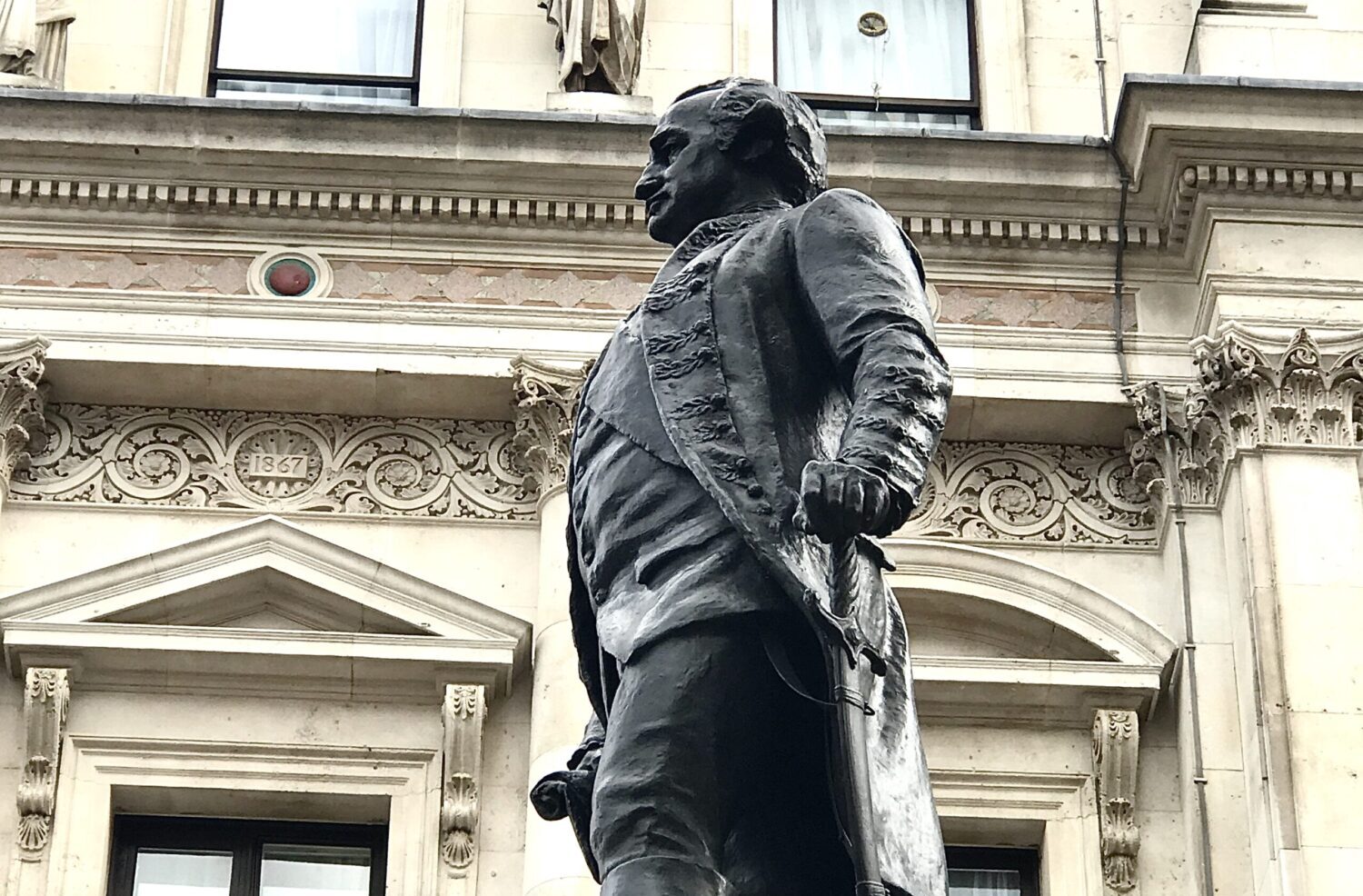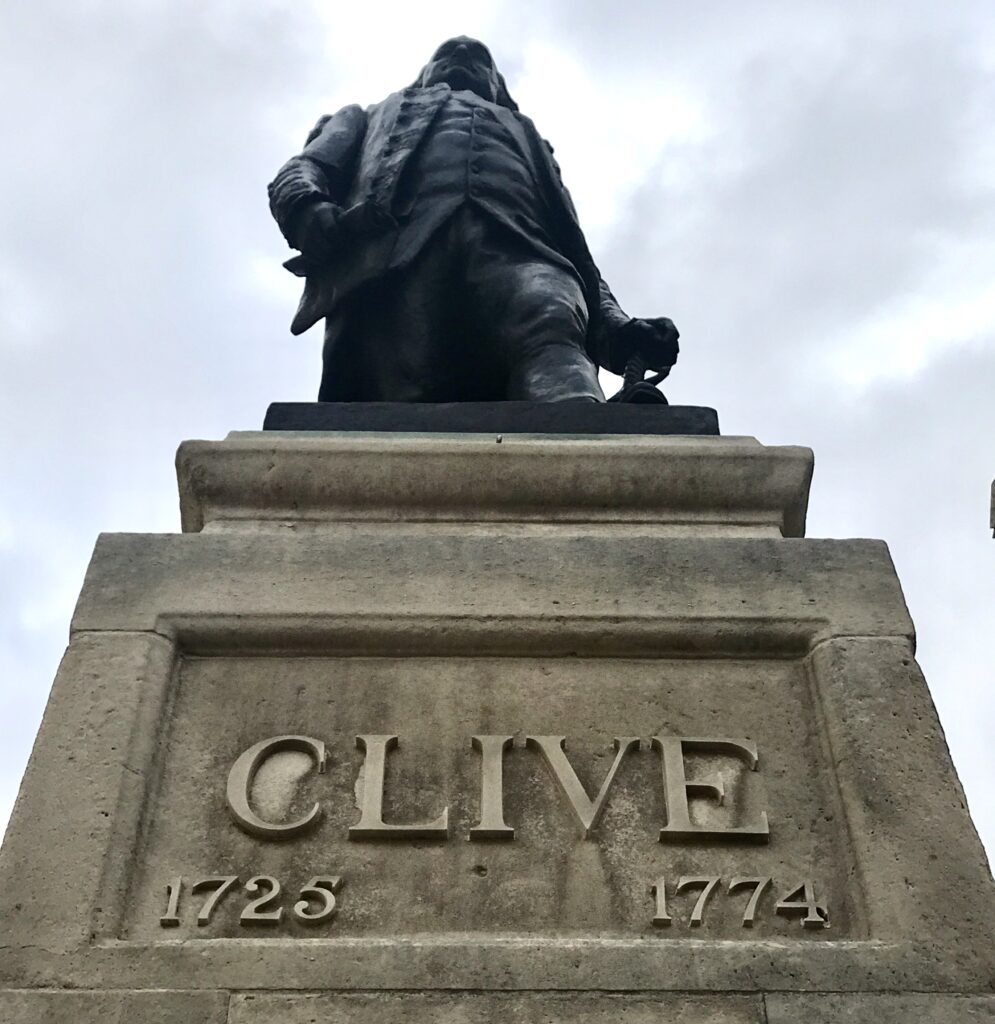
WHAT: Statue of Robert Clive
WHERE: Clive Steps, King Charles Street, Whitehall (map)
BY WHOM: Robert Tweed
WHEN: 1912
The statue of Robert Clive – “Clive of India” – is between two government buildings (The Foreign Office and the Treasury) off Whitehall and facing St James’s Park. It is a less than prominent site for a man whose military and political campaigns were the beginning of British rule over India and reflects the mixed opinion of Clive that existed even during his life. (This ‘mixed’ view has tipped heavily to the negative since the erection of the statue.)
The bronze statue is 2.9m (9.5’) tall and stands on a 4.2m (13.5’) limestone plinth. Around the plinth are three bronze friezes depicting scenes from Clive’s life: at the siege of Arcot 1751; in the Mango Tope on the eve of Plassey 1757, and Clive receiving the grant of Bengal at Allahabad in 1765. It was commissioned from the sculptor Robert Tweed as a result of a campaign by Lord Curzon (Viceroy of India 1799-1905), who formed a committee in 1907 to raise funds for statues to Clive in London and Kolkata (Calcutta). The chosen site (the present site) was not ready in 1912, so the statue stood in Whitehall until 1916 before being moved to the current location.
Clive was a clerk with the East India Company, arriving in Madras in 1744. Subsequently joining the Company’s military (a private army) he went on to command the forces at the 1751 Siege of Arcot and the 1757 Battle of Plassey, the decisive victory over the Mughal Nawab of Bengal and his French allies. The battle resulted in the East India Company gaining control of Bengal and its vast tax revenues.
Corrupt and acquisitive even by the standards of 18th century British imperialism, Clive amassed a huge fortune (tens of millions in today’s money) with a house in Berkeley Square, and large estates in Surrey, Shropshire (the county of his birth), Monmouthshire and in Ireland. He died in 1774 (possibly by suicide; as a young man in Inida he had tried to kill himself, but his pistol did not fire), and his reputation was far from good.
It is notable that the move to commemorate him came well over a century after his death, part of a post-Victorian revision of the British involvement in India. When we consider statues and the right’s opposition to removing them and thus ‘changing history’, remember that Clive’s statue is the product of a romanticising of a bloody and corrupt episode of imperial expansion that was controversial at the time it happened.

